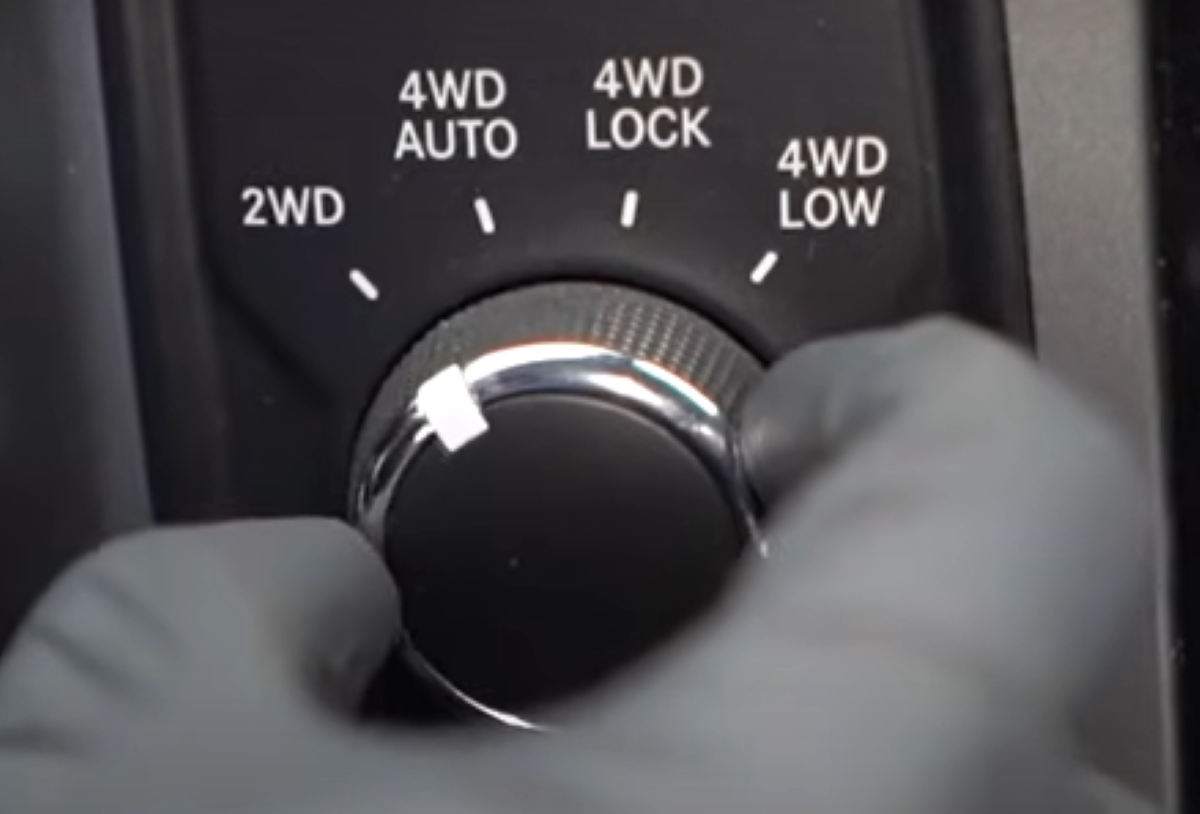The 4 wheel drive function allows you to place power to different areas in the drivetrain for different reasons. 4WD has a few different options like High, Low, and Auto. Learn what these different functions can do, why you’d want to use them, and when to use 4 wheel drive in this article and video.
How Do I Shift into 4 Wheel Drive?

There are a few ways to shift into 4WD depending on the vehicle. You may have an electronic shifter that requires you to press some buttons or twist a knob, or you might have a manual shifter that requires you to move a lever before the transfer case can engage.
Typically, vehicles with electronic shifters will have more options, like 4WD auto. Vehicle with manual shifters will likely have 2WD, 4WD High, and 4WD Low.
What Is 2 Wheel Drive?
2WD mode puts all the power from the engine and transmission to the rear wheels. It’s good for fuel economy and a common mode for regular driving. 2WD puts minimum wear and tear on the driveline system.
What Is 4 Wheel Drive High?
4WD High is for slippery or off-road conditions. If you’re using 4WD High or 4WD High Lock, you want to make sure you’re not driving faster than 55 mph. This is not a mode you’d want to use on dry pavement for regular driving.
4WD high is useful for driving in a straight line. If you take turns and especially sharp turns with it activated, you might notice binding. This happens because as you’re turning, the outside wheels will attempt to spin faster, but in 4WD all wheels will be spinning at the same speed.
Other than binding, you might also notice that it feels like the vehicle has less acceleration. All four wheels are trying to spin instead of just the two at rear with 2WD. Driving continuously with 4WD High could cause major damage to the driveline, especially the transfer case, and this will be especially noticeable if you have locking front or rear differentials.
What Is 4 Wheel Drive Low?
4WD Low is used for slow driving speeds. You will need the truck stopped completely and be at less than 3 mph with no acceleration to shift into it. This mode will change how the fast tires are trying to spin compared to the engine speed to increase torque at the ground level, like at a crawling speed.
4WD Low is useful in certain instances like being stuck, or driving up a steep hill with loose terrain. Once you’ve finished using it, you want to come to a complete stop and switch modes.
What Is 4 Wheel Drive Auto?
4WD Auto is available on vehicles with electronic systems and is great for snowy, rainy or other inclement weather. If you’re driving and one or more wheels slip, the vehicle will automatically go into 4WD mode to help the wheels get a grip. This reduces the risk of getting stuck or losing control of the vehicle if it’s in 2WD.
You can use 4WD Auto in any driving condition, like rough weather, on slippery roads, or even dry roads. You won’t need to worry about damaging the driveline system as long as it’s not continuously on for every driving occasion, like city, highway, and rural driving. Leaving this mode on continuously can put pressure on the driveline system and parts in the transfer case. We recommend driving with it off and using 2WD in scenarios where this mode isn’t necessary.
How to Use the Neutral Switch Button
The neutral switch button is useful for when you need to put the truck in neutral and don’t want to turn it on, like if you’re towing the truck. This mode will disengage both drivelines from the transfer case to reduce damage to the transfer case or driveline.

Learned When to Use 4WD? Get More Tips From How-To Videos
If you’ve learned all about four-wheel drive and want more tips, check out our how-to videos. We have general maintenance tips and instructions for DIY repairs on specific models.
More Automotive Tips
- How to Increase the Chevy Avalanche’s Bed Size
- Stuck Strut Bolt? How to Remove the Strut Mount Bolt
- Tailgate Won’t Latch? How to Fix a Tailgate That Won’t Stay Shut
- Power Window Not Working on the Passenger Side or Driver Side?
- What Is a Wheel Hub?
Shop Parts and Tools
- Drivetrain
- Heating & Cooling
- Brakes & Wheel Bearing
- Steering & Suspension
- Headlights & Lighting
- 4WD Parts

